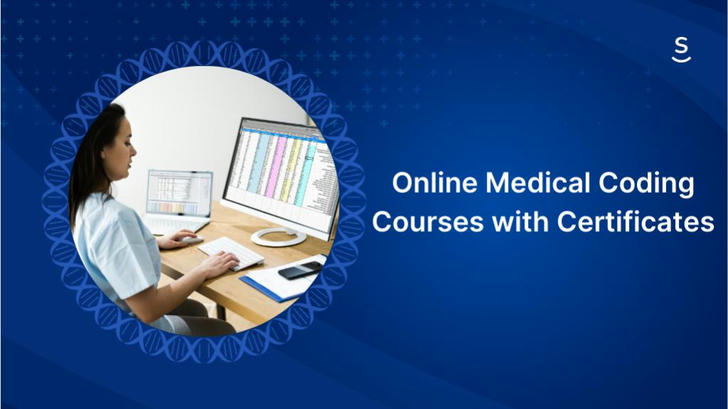Fast routes into medical billing & coding — 4-week online starts, government-funded tracks, certifications and how to apply
If you’re thinking: “Can I get into medical billing and coding quickly — maybe with a 4-week online start — and use government support to get certified?” — the short answer is yes, with nuance. Below I break down what’s available today in the U.S., which options are truly government-backed, typical course lengths and credentials, and exactly how to apply.

Government-funded paths you should know
1) WIOA (Workforce Innovation and Opportunity Act) — Individual Training Accounts (ITAs)
WIOA is the main federal workforce program that many states use to fund short-term, job-aligned training for eligible adults (dislocated workers, low-income, etc.). If you qualify, your local American Job Center can issue an ITA to pay for an approved medical billing & coding program at a community college or an approved vendor. Program lengths under WIOA vary, but many accelerated certificate tracks run 4–12 weeks (introductory) or up to a few months for more comprehensive certificates. Check your state WIOA list for eligible providers.
2) Registered Apprenticeships & healthcare apprenticeships
The Department of Labor promotes registered apprenticeships in healthcare (including medical records and billing occupations). Apprenticeships combine on-the-job training with classroom instruction; employers pay wages while you train. Some employers offer a wage of $20 per hour for apprentices during the training period. Apprenticeship models vary in length, but they’re employer-driven and frequently include industry certification prep. Search Apprenticeship.gov for “medical billing,” “medical records,” or “medical coder” listings in your area.
3) Community college workforce programs (state & local funding)
Many community colleges run short certificate programs in medical billing & coding designed to prepare students for AHIMA/AAPC exams. Typical program lengths are 8–16 weeks for basic certificates and longer (several months) for full coding tracks; some colleges provide exam vouchers and job placement help. Community colleges are frequently WIOA-approved providers.
4) Nonprofit and workforce providers (Goodwill, Skills centers, MedCerts)
Organizations like Goodwill run hybrid medical coding programs (often 12–14 weeks) tied to employer pipelines; companies like MedCerts act as apprenticeship intermediaries and list DOL-registered apprenticeship options for coding careers. These providers often work with local workforce boards to accept WIOA funding and include career services.
Certifications: which ones matter and how long they take
AHIMA — Certified Coding Associate (CCA): an entry coding credential focused on hospital coding; many college programs prepare students for this exam.
AAPC — Certified Professional Coder (CPC): widely recognized for physician-office coding; instructor-led prep is often 16 weeks, while self-paced students often take 4–8 months to be exam-ready.
Short online courses can prepare you for basic roles and help you decide if you want to pursue full certification; exam-ready programs usually include hands-on practice, mock exams and more classroom hours.
Typical program hours / timelines you’ll see
🔹Quick intro courses: 20–40 hours (1–4 weeks) — good for fundamentals.
🔹Accelerated certificate tracks: **80–160 hours **(6–12 weeks) — often WIOA-eligible.
🔹Full certification prep (CCA / CPC): 3–6+ months depending on pace and format.
How to apply — step-by-step
1.Find local help: Start at CareerOneStop or your state’s American Job Center to see WIOA-approved providers and get pre-screened for training vouchers (ITAs).
2.Search registered apprenticeships: Use Apprenticeship.gov and enter your ZIP + keywords like “medical coder” or “medical records specialist.”
3.Pick accredited prep: Choose programs that explicitly prepare students for AHIMA or AAPC exams (community colleges, Goodwill, MedCerts, or recognized online vendors). Confirm the provider is on your state’s WIOA list if you plan to apply for funding.
4.Prepare paperwork: Be ready to show ID, proof of residence, and if applying for WIOA, proof of income/employment status. Expect a short skills or aptitude screen.
5.Ask about exam vouchers & job help: Many workforce programs include test-prep and sometimes an exam voucher or job placement services — ask up front.
Practical tips and pitfalls
🔸A 4-week course is a good start, not necessarily a full credential. If your target is AHIMA/AAPC certification, budget for more study time or pick an accelerated program that explicitly lists certification pass rates.
🔸Verify WIOA eligibility early. Local workforce centers have limited slots and specific provider lists. Apply early and get pre-approved if you want funding support.
🔸Look for job placement support. Programs tied to employers or apprenticeship models tend to get you into a first job faster than standalone self-study.
Bottom line
If you need a fast entry into healthcare administration, a 4-week online course can teach fundamentals and help you qualify for entry-level roles. But if you want certification (CCA or CPC) and better hiring prospects, aim for a WIOA-eligible accelerated certificate or an apprenticeship pathway that combines employer-paid hours with instructor-led exam prep. Start your search at CareerOneStop and Apprenticeship.gov, contact your local American Job Center, and pick a program that explicitly prepares you for AHIMA or AAPC certification. You’ll lay a practical path from short online study to a certified, hireable skill set.
WIOA-Eligible Training Program Finder
